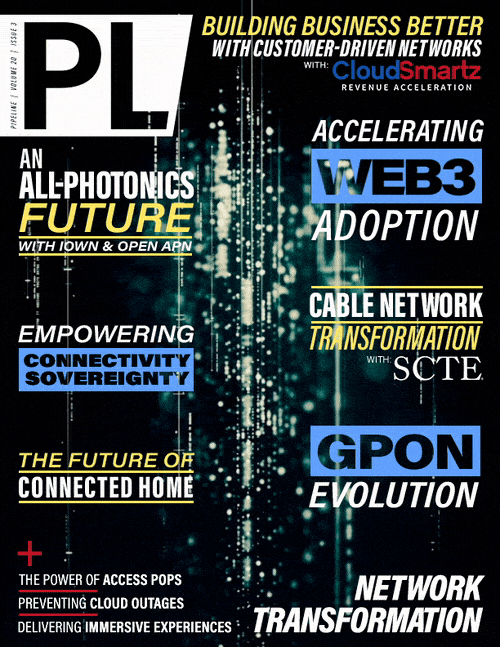The All-Photonics Future
The Case(s) for Photonics-based Networking
and Computing Infrastructure
Use Case Overview
To get a better sense of how the Open APN/DCI platform and related technologies will unfold, let’s see how it could be used in practice. The IOWN GF envisions use cases congregating around two categories:
Cyber-Physical System (CPS) use cases, such as physical security alerts, disaster notification, remote vehicle assistance, energy-efficient traffic routing, remote factory operation, process plant automation, network device failure prediction, network infrastructure management, disease outbreak prediction, renewable energy flow optimization, and social sustainability.
AI-integrated Communications (AIC) use cases, such as interactive live music, interactive live sports, cloud gaming, entertainment on-the-go (in vehicles), remote professional learning, extended reality (XR) navigation, augmented human communication, and instantiation of “another me.”
To accelerate the development and commercial availability of its architecture and technology, the IOWN GF has published several detailed reference implementation models, or blueprints for realizing attractive use cases. The models are also helpful for identifying potential technical issues and improving architecture and technology specifications. What follows are summaries of three models, two CPS (remote factory operation and area management security) and one AIC (interactive live music).
Three Reference Models
Remote Control Robotic Inspection. Geographically distributed manufacturing sites and skilled labor shortages make it difficult to position the right personnel in the right plant at the right time. This situation has created a compelling case for a maintenance expert who can remotely control on-site robots to carry out essential procedures, such as inspections, parts replacement, valve closure, etc.

Figure 2: Overview of Remote Controlled Robot Inspection
Technology gaps and issues that would hinder this kind of operation include unpredictable network constraints affecting capacity, latency, and reliability of communication; the trade-off between high reliability and low latency in end-to-end communication; a lack of methods for streaming large volumes of high-definition video with low latency; instability of wireless coverage area; and operational limitations due to network boundary protection for security.
Addressing these gaps, the IOWN frameworks define a communication stack with low latency messaging using remote direct memory access (RDMA)-based protocols for hardware offloading, hardware-based data transfer with adaptive video encoding, and guaranteed wireless coverage through multipath utilization and wireless link quality prediction. This model also requires zero-trust protection, strong cryptography, and an infrastructure orchestrator.
Interactive Live Music. The next case involves live music in a virtual space. (See Figure 3 on next page.) Starting with a few “power users” and then scaling up to a massive number, this ultra-realistic service would harness consumer-grade devices and the power of distributed pooled computing resources over low-latency connections.
Among the specific requirements for this use case are low motion-to-photon latency between sensor devices and display devices (to reduce the chance of motion sickness); low end-to-end latency between capturing the audience member’s motion and reflecting it to others’ displays and vice versa (to enable interactive experiences, such as waving hands and shouting); and dynamic network and computing resource



















